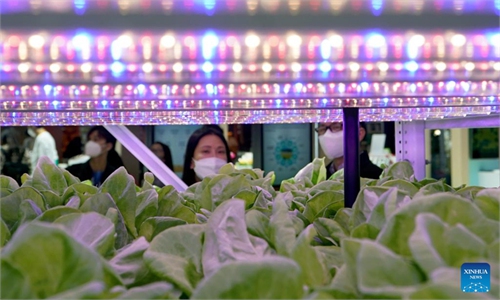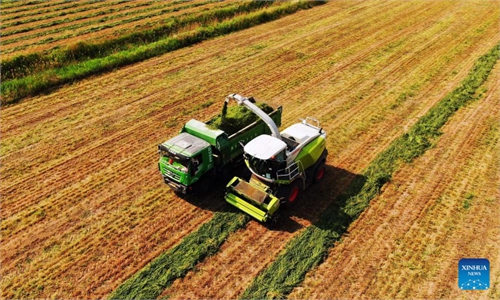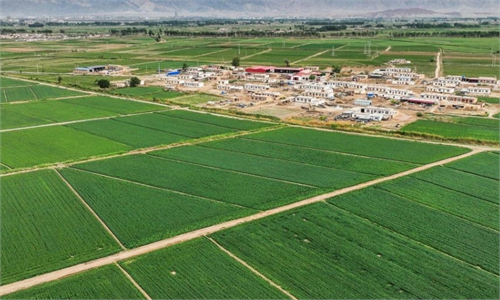Path of agricultural modernization with Chinese characteristics emphasizes self-sufficiency, common prosperity
Government lists 'solidifying food security' as a key job for 2023
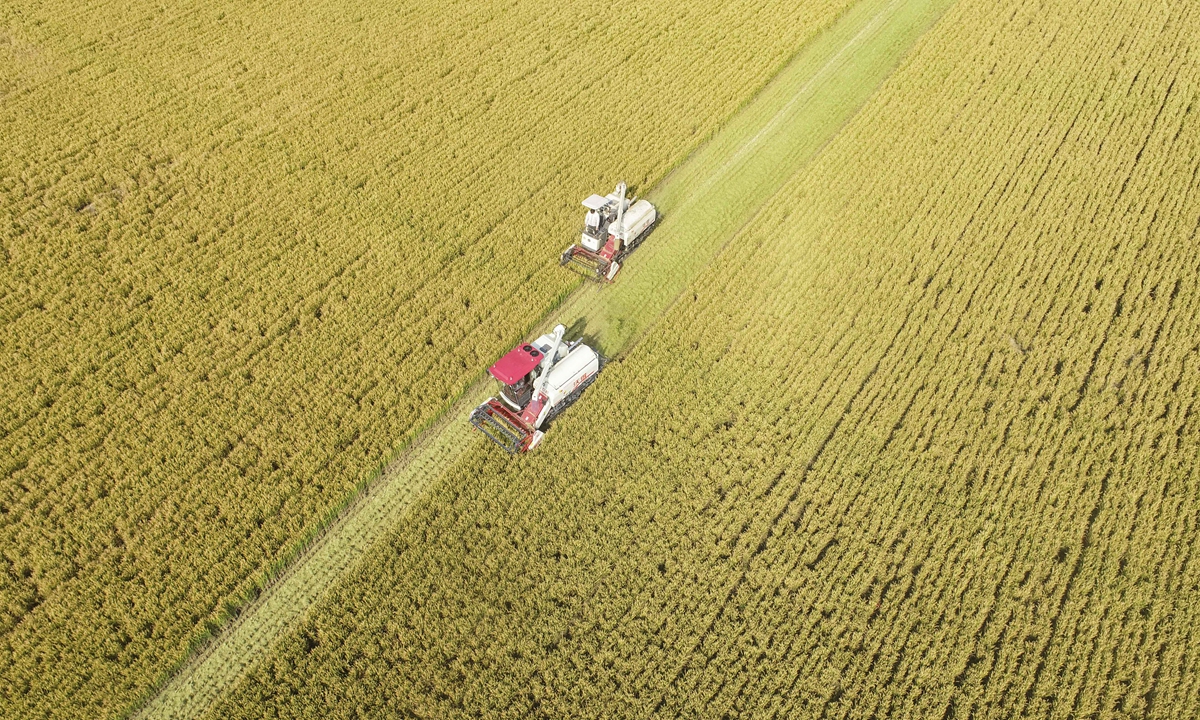
Farmers harvest rice with harvesting machineries in Huai'an, East China's Jiangsu Province. Photo: VCG
China will strive to shore up food security and mull more targeted moves to prevent a large-scale return to impoverishment in the countryside, Chinese officials said on Tuesday, as the world's second largest economy vowed an all-out effort to bolster farmers and make it a "strong agricultural nation."
The comment came after the central government on Monday published the "No.1 central document" for 2023, outlining nine tasks to comprehensively promote rural vitalization. It is also the 20th consecutive year that China's central authorities have issued the first policy statement on agricultural and rural work.
Tang Renjian, director of the Central Rural Work Leading Group Office and minister of Agriculture and Rural Affairs, said at a press conference in Beijing on Tuesday that the key policy priorities of the document could be summarized in three aspects - "securing the bottom line, bolstering rural revitalization efforts and reinforcing support."
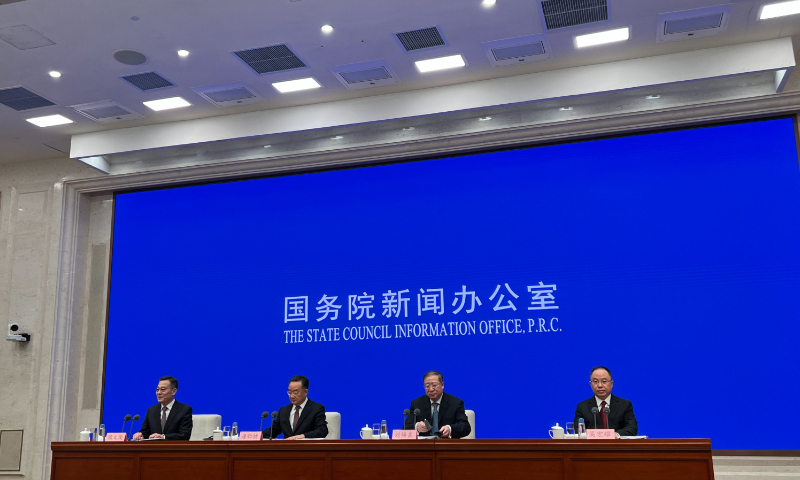
A view of a press briefing of the State Council Information Office on February 14, 2023 Photo: Li Xuanmin/GT
"Securing the bottom line is intended to ensure national food security and forestall any large-scale re-emergence of poverty," Tang said, while highlighting the goal of achieving grain output of more than 650 million tons this year and pushing production to a new level of 700 million tons.
According to Tang, China will stabilize its planting area while striving to increase grain production. For example, authorities will encourage southern regions to develop grain varieties that yield more than one crop per year, and implement projects to increase yields of soybeans and corn.
China will also expand the planting of edible oil crops such as soybeans, steadily push forward corn-soybean strip intercropping and develop saline land for planting soybeans.
"China has the potential to achieve grain output of 700 million tons this year. Planting conditions are favorable, disruption from the pandemic has ebbed, and the prices of agricultural materials have dropped. So it is necessary to maintain the momentum with more muscular support," Li Guoxiang, a research fellow at the Chinese Academy of Social Sciences, told the Global Times on Tuesday.
In 2022, China's grain output reached 650 million tons for the eighth year in a row, providing a better, stronger and more stable source of rice for 1.4 billion Chinese people despite global uncertainties, Tang said.
Production of soybeans, a crop for which China is heavily reliant on imports, reached a new high last year, exceeding the milestone of 20 million tons.
Also, China moved to solidify the results of poverty reduction in 2022 - a key year that saw deepened integration between poverty relief and rural revitalization - "with a better foundation and more sustainable results," Liu Huanxin, deputy director of the Office of the Central Leading Group for Rural Affairs and Director of the National Rural Revitalization Administration, told the Global Times on Tuesday.
According to Liu, the consolidation of the results of poverty reduction - a foundation for carrying out rural revitalization - was manifested in three aspects: no large-scale backsliding to poverty, which was helped by a monitoring and support mechanism, as well as stable employment and rising incomes among rural workers who have been lifted out of poverty.
In 2022, a total of 32.78 million migrant workers enjoyed full employment, which was 2.59 million people above the annual target. The country's yearly per capita disposable income of farmers in areas just emerging from poverty grew 7.5 percent last year to 15,111 yuan, which was 1.2 percentage points higher than the national average for farmers.
China will work harder to reduce poverty through helping poor workers secure jobs, Tang said, noting that the country will make sure that more than 30 million people who have shaken off poverty will be employed.
Li suggested that rural authorities to establish a more comprehensive mechanism to diversify and shore up farmers' income, in case of a resurgence of poverty in rural areas where the agricultural product structure is too simple and vulnerable to overcome market fluctuation.
At the press briefing, officials expounded on the connotation of "strong agricultural country," a grand goal set for the first time in the annual policy document, which observers said would buttress the building of a Chinese path of modernization with a longer vision.
"Building a strong agricultural nation has rich meanings. On the one hand, it needs to incorporate the common traits presented by developed countries. On the other hand, it should take account of Chinese characteristics, including a large population with relatively little arable land, the farming civilization deeply rooted in Chinese history, and the harmonious coexistence between man and nature," Tang said.
He said that the factors that determine the path of agricultural modernization with Chinese characteristics should be "holding rice bowls firmly by ourselves, developing ecological low-carbon agriculture, and steadily pushing forward common prosperity."

